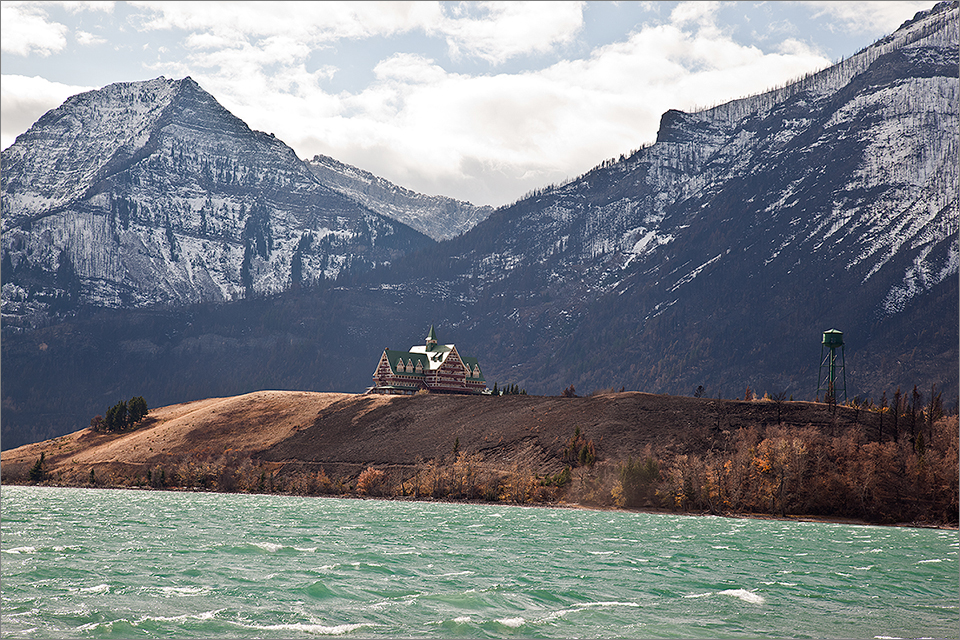
It’s been several weeks since Waterton Lakes National Park reopened to the public. It had been closed for two weeks in September, due to the Kenow wildfire. My wife and I had not been to the park since late April and on Monday we decided to go for a visit to see how it fared through the fiery ordeal.
Waterton Park has a reputation for being one of the windiest places in southwest Alberta, something it lived up to on our trip. A wind warning was in effect for the region and gusts of 100 kilometers-per-hour were buffeting the park when we arrived. It was winds like this that fanned the wildfire’s flames as it swept through the national park last month.
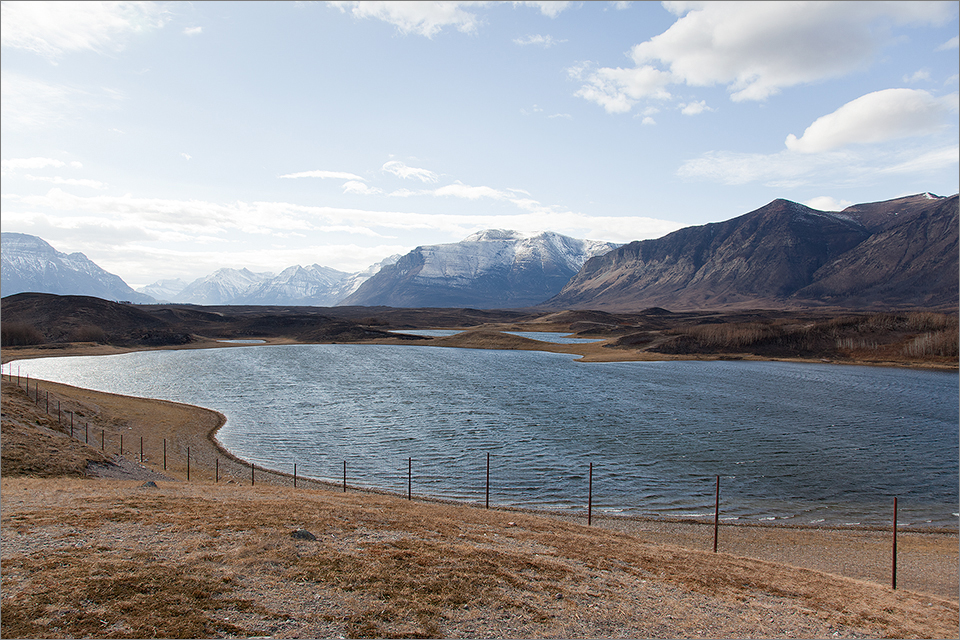
View from bison paddock just inside the park.
The bison herd had been relocated prior to the fire.
Fire in the Park
The fire was started by lightning on August 30th near Kenow Mountain in the Flathead Valley of British Columbia, about 10 miles west of the Alberta – BC border, and the boundary with Waterton Lakes National Park. The park was evacuated September 8th and on the afternoon of September 11th, the fire entered the park. It quickly spread down the Akimina Valley and headed toward the townsite and the historic Prince of Wales Hotel. Crews had set up pumps, hoses, and sprinklers, to prevent the fire from burning homes and businesses within the community. Calgary and Taber firefighters were deployed to the scene to protect the famous hotel from the advancing wildfire. The 90-year-old, wood-framed structure was hosed with water and foam to prevent wind-blown embers from igniting it.
The fire passed through quickly and in the end, the townsite, including the Prince of Wales Hotel, had been saved. The fire burned within a couple hundred feet of the hotel, but thanks to the heroic efforts of the firefighters, it did not claim the park’s most recognized landmark. My photo at the top of this post shows the charred hillside immediately below the hotel.
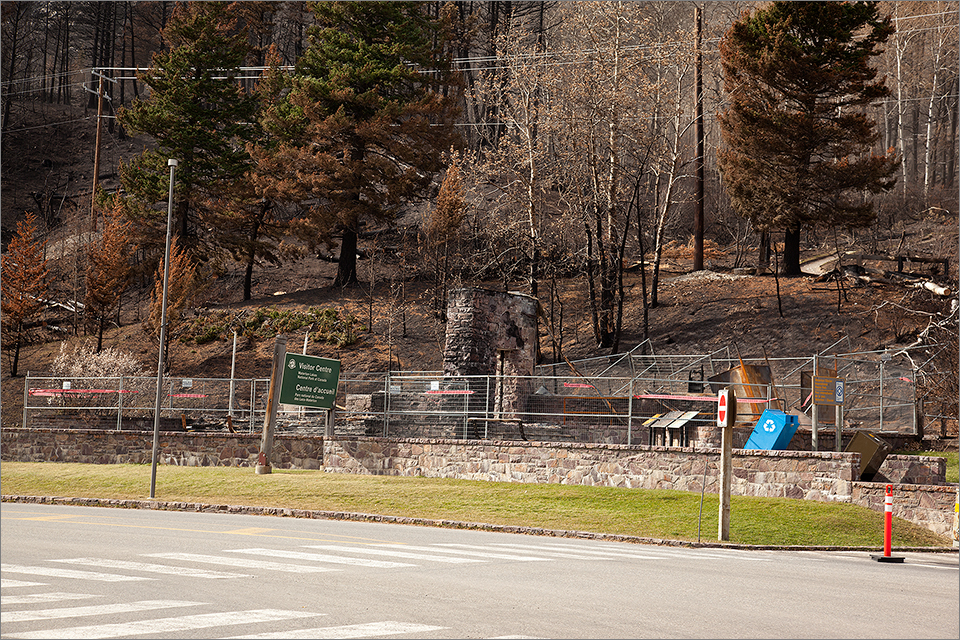
Visitor Centre reduced to ashes. Scorched stonework is all that remains.
Casualties
The park’s visitor centre, a short distance from the hotel, was not as fortunate and burned to the ground, as did several other structures in the park. Sadly, the Alpine Stables was also reduced to ashes. Fortunately, their horses had been relocated the previous week. The family who operates the trail-riding business hopes to have the new Alpine Stable rebuilt by May, 2018. I hope so. I have great memories of riding horses here when I was a kid. The fire also destroyed five homes on the outer perimeter, north of the park. Hopefully, they will receive the help they need to rebuild.
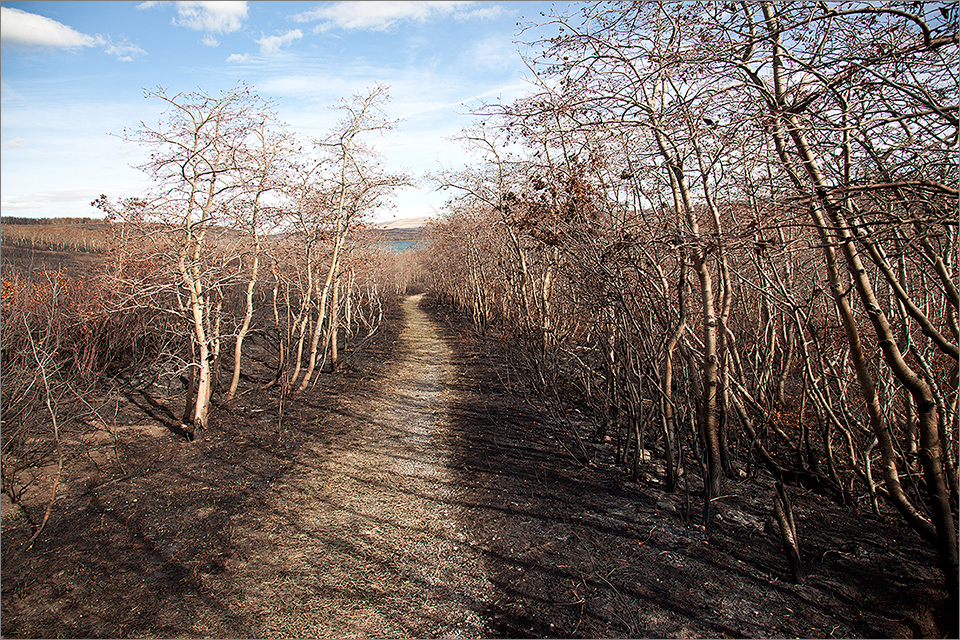
Trail leading down to John George “Kootenai” Brown’s gravesite
A Pleasant Surprise
The best part of the day for me was when I made the short walk down the trail leading toward the shores of Lower Waterton Lake, where John George “Kootenai” Brown’s family gravesite is located. Brown and his second wife, a Cree woman named Isabella, or Chee-pay-tha-qua-ka-soon (The Blue Flash of Lightning), homesteaded near this location in 1891. They were the first settlers in this corner of the province. On May 30th, 1895, a 140 sq. km (54 sq. miles) area close by was set aside by the federal government as a Dominion Forest Park. Its status, size, and name have changed over the past 122 years, and it is now known as Waterton Lakes National Park. John George Brown was the park’s first fisheries inspector (1901) and game guardian (1908), and became the first park superintendent in 1911. Brown continued working for the park until his death in 1916.
The gravesite trail passes through a grove of aspens, whose trunks and undergrowth have been badly burned. The narrow path leading through the trees was barely scorched, but the biggest surprise was still to come. Upon arriving at the gravesite, I couldn’t believe my eyes. When the fire passed through, it had completely encircled the white picket fence surrounding the graves but left them untouched and unburned. Divine intervention? Perhaps so!
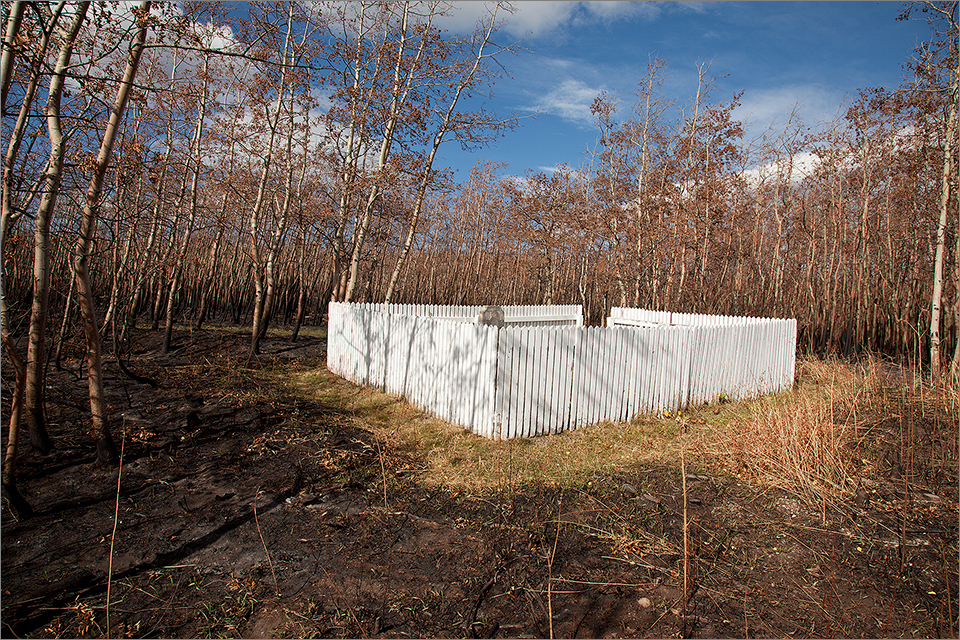
White picket fence unscathed by the fire
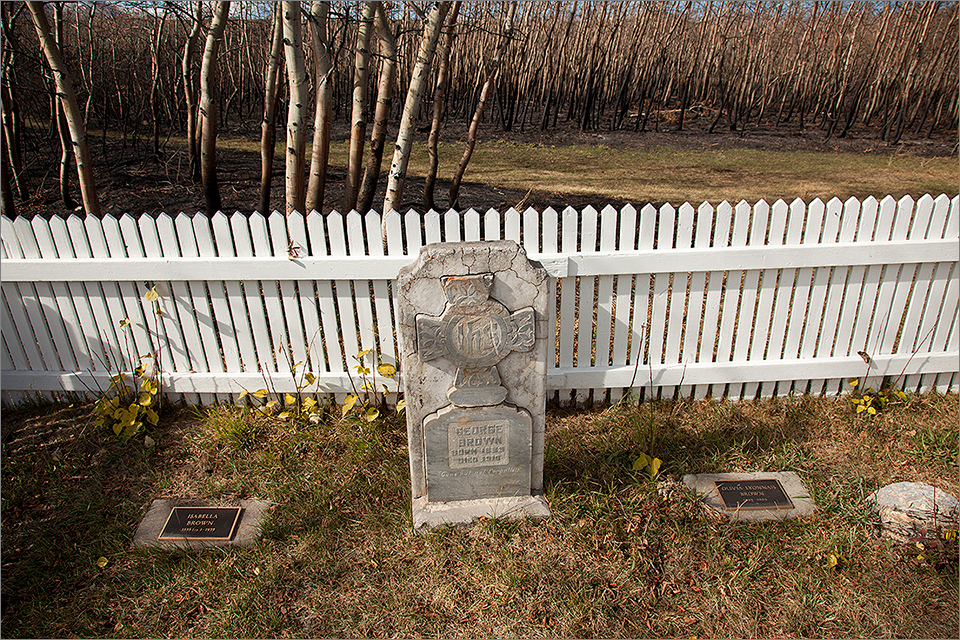
Kootenai Brown’s headstone in center. His first wife, Olivia, is buried on the right, and his second wife, Isabella, is on the left.
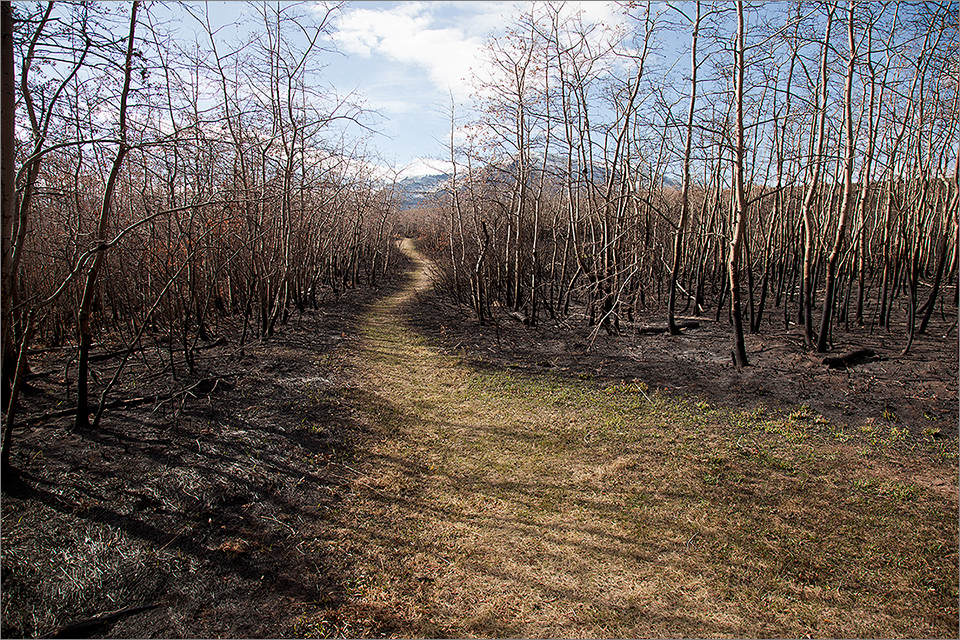
Trail leading up to main road from gravesite
Quiet Townsite
Most of the town’s businesses have closed for the season and there were not many tourists about on Monday. There were a number of signs and banners on storefronts and doors, thanking firefighting crews for saving the town.
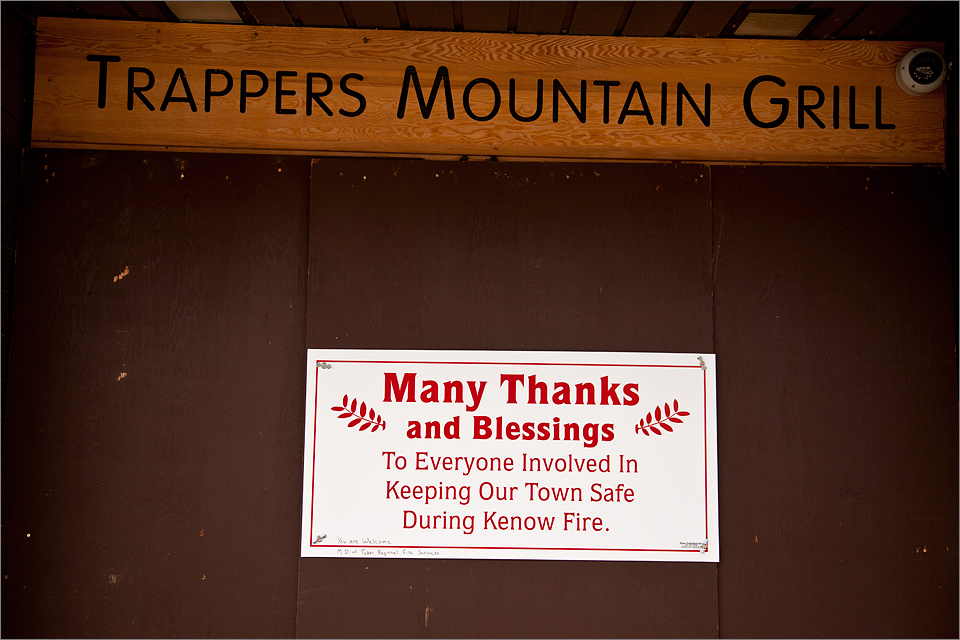
The sign says it all
Pictures in the Park
The Akimina and Red Rock Parkway remain closed, so you can’t go very far or see everything in the park. We drove around the townsite a bit and I was able to grab a few pictures, as shown below.
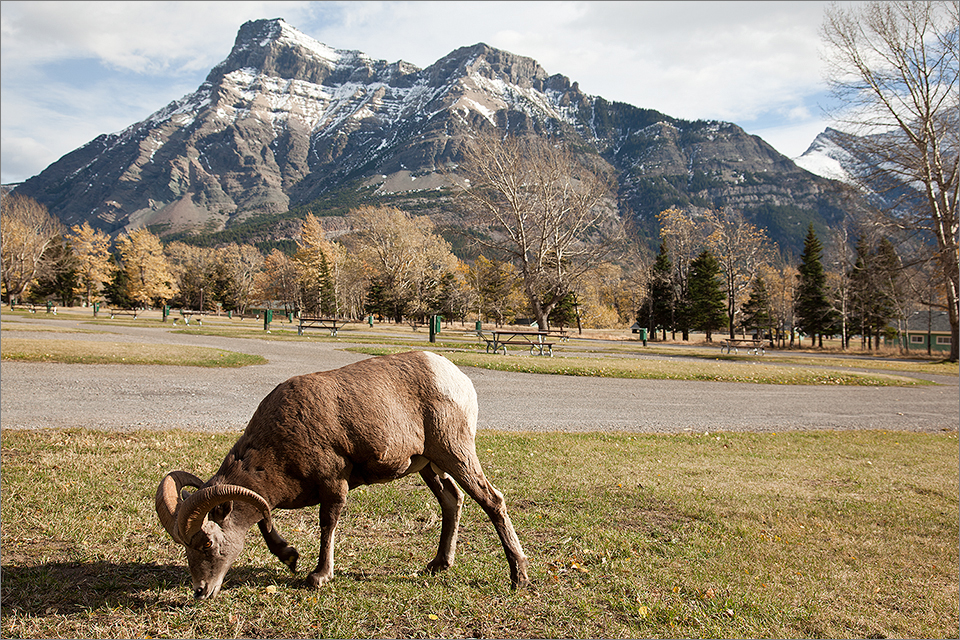
Bighorn ram in town campground, with Vimy Peak in the background
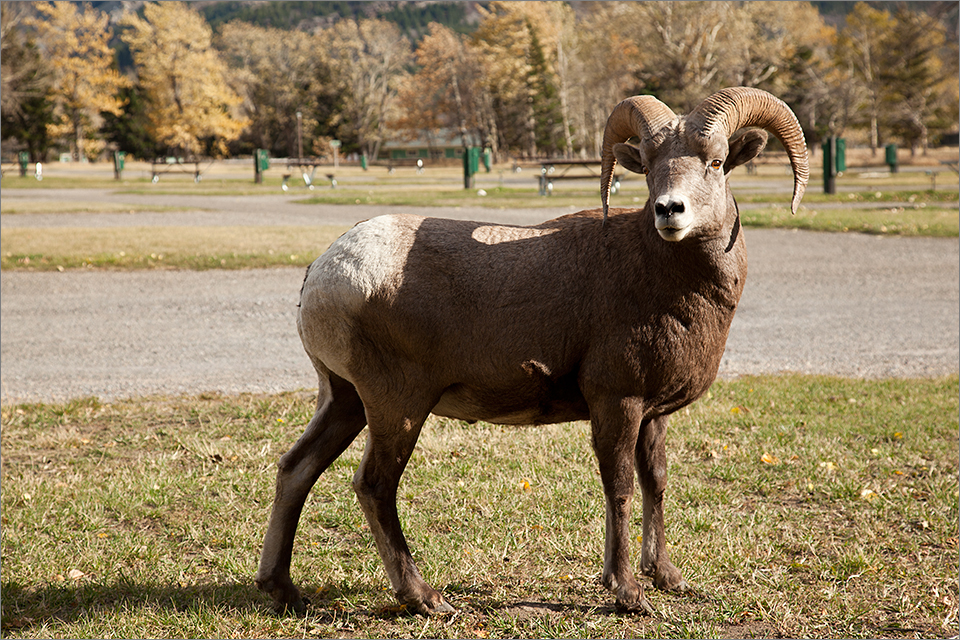
Under a watchful eye
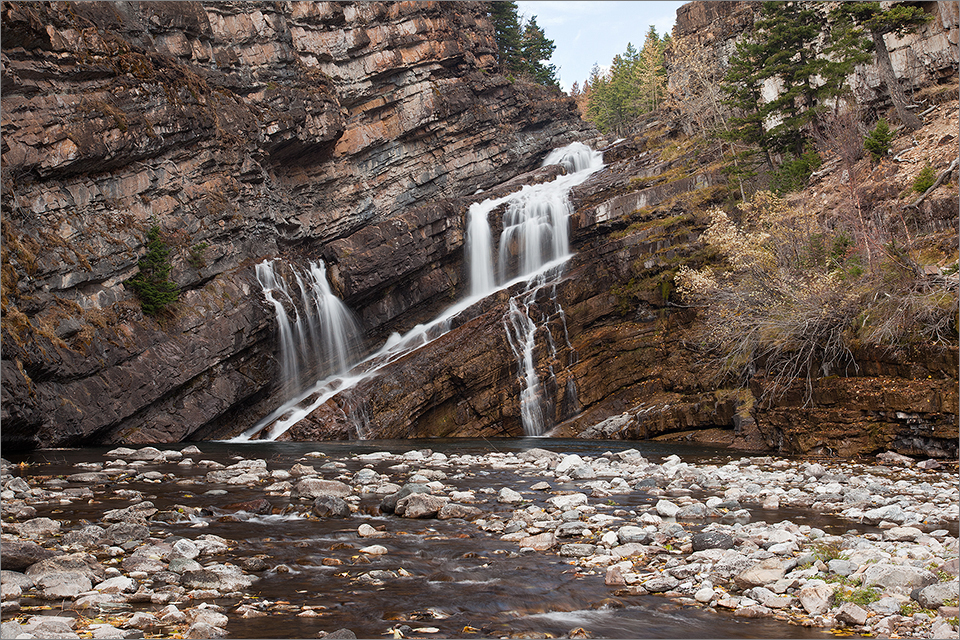
Scenic Cameron Falls
Final Thoughts
More than 30% of Waterton Park burned during the Kenow Fire. The park will certainly look different for some time to come, but it will still be a beautiful place to visit. Already, there are shoots of new growth and blades of green grass sprouting on the blackened forest floor. You can burn trees and vegetation, but you can’t burn the mountains. The forests will come back soon enough, and they will once again cover all the majestic mountains and scenic valleys of Waterton Lakes National Park, a place beloved by so many people over the generations.
“This is what I have seen in my dreams, this is the country for me.”
– John George “Kootenai” Brown, upon seeing the Waterton Lakes area for the first time in the summer of 1865.
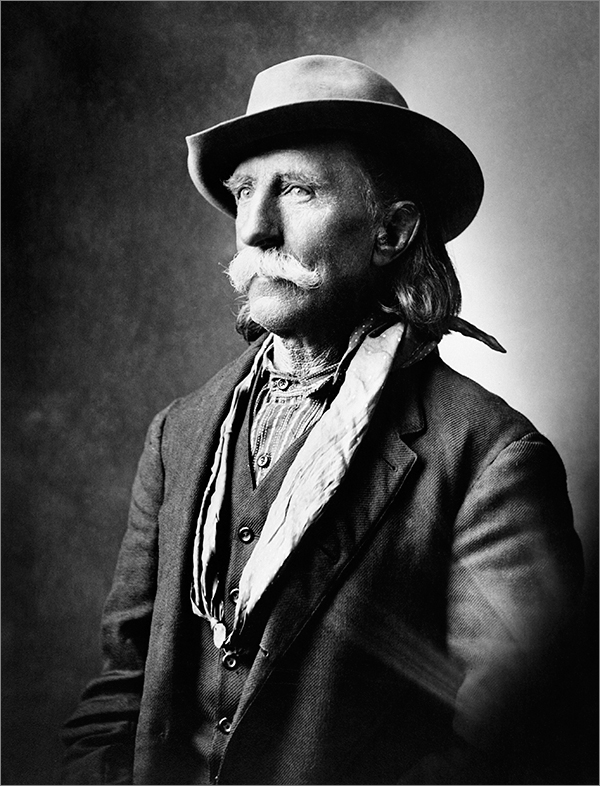
John George “Kootenai” Brown
1839 – 1916
Article References & Credits
Parks Canada – Waterton Lakes National Park website
Manitoba Historical Society – “Kootenai” Brown in the Red River Valley
Kootenai Brown – His Life and Times, 1839 – 1916 by William Rodney
Photo – Glenbow Museum Archives:
John George “Kootenai” Brown (NA-678-1)

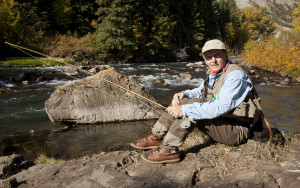
2 Comments
Vic:
You are certainly right about the recovery. After the huge fires in Yellowstone in the ’80s, it was a torched landscape, but has come back now – sooner than most of us had anticipated.
Regards to all
Terry Maurer
Hi Terry,
I agree. Once the new grass and other vegetation comes up in spring, the landscape around Waterton will start looking better. The same thing happened in Crowsnest Pass after the Lost Creek fire in 2003. Within a couple years, the undergrowth had come back and there was plenty of greenery everywhere. The same thing will happen in Waterton Park and the surrounding area. Thanks for checking in!